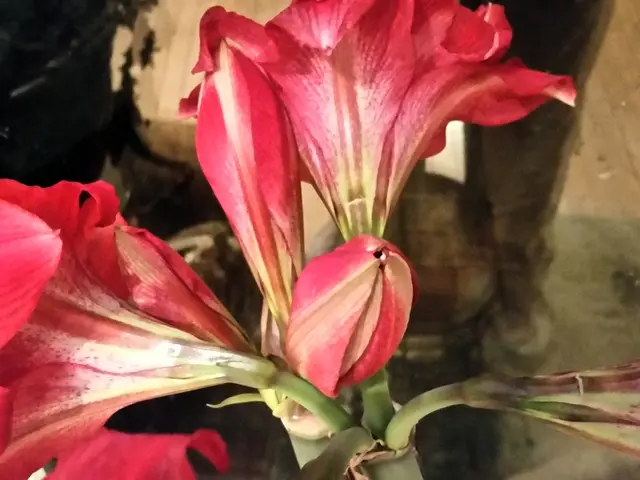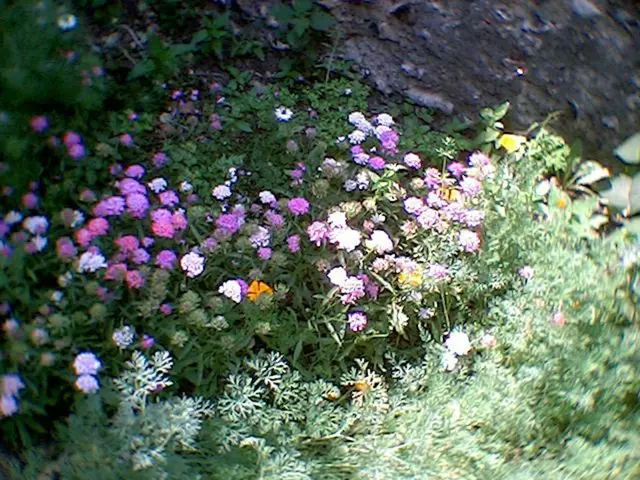Understanding and Nurturing Spring Seed Growth: Overcoming 21 Obstacles to Successful Germination
Growing a Thriving Spring Garden
Ah, the thrill of starting seeds for spring gardening! But it ain't always a walk in the park, am I right? People often stumble without even knowing why their seeds won't sprout. Small blunders, from water moisture to timing goof-ups and storage errors, can lead to some serious disappointments. Stay smart, folks, and learn what to keep an eye on to make sure your garden's not just a bunch of wasted space. Here's a rundown on the most common seed-starting hiccups — and how to get your garden popping again.
1. Past-their-Prime Seeds
Remember that just like us, seeds aren't immortal. Over time, their ability to sprout decreases, especially if they've been stuck in humid or hot conditions. Even with top-notch storage, someonly stay fresh for one to three years. Chances are, expired seeds won't sprout worth a damn. Take a peek at the seed packet date before going to town. If you're unsure, do a germination test before planting a whole bunch.
2. Inappropriate Soil Temperature
Seeds need the right soil temp to sprout. If the soil's too cold, they might chill out or rot. Warm-season crops prefer soil between 65 and 75℉ (18 – 24°C), but cool-weather crops like lettuce or spinach can deal with lower temps. Check the temp before sowing to up your odds.
3. Overdoing It with the Water
Too much H2O can drown the seeds. When the soil's too soggy, oxygen levels drop, and seeds just won't bloom right. Soggy soil can also encourage mold and fungus. Keep the soil moist but not soaked – you know, about as moist as a wrung-out sponge.
4. Drying Out the Soil
On the flip side, seeds need consistent moisture to grow. If the soil dries out after planting, the sprouting might completely halt, especially in the early days. Spritz the soil with a spray bottle or gentle watering can to keep the surface moist. Covering the trays with plastic can help hold in moisture too.
5. Poor Contact between Seeds and Soil
Seeds gotta touch the soil firmly to soak up water and start growing. They might not get enough moisture if they're just floating on top or in airy soil. Give 'em a gentle smoosh into the soil after sowing.
6. Entombing the Seeds
Planting seeds too deep makes it tough for 'em to reach the surface. Many small seeds only need a dusting of soil. If planted too deep, they might exhaust themselves before breaking free. Follow the depth guide on the seed packet. When in doubt, shallow is safer.
7. Planting Too Shallow
While burying seeds deep can be problematic, exposing them to the elements comes with its own set of risks. Shallow seeds can dry out fast or wash away during watering, and critters might munch on 'em. Press 'em gently into the soil and lightly cover if needed.
8. Using Unhygienic Containers or Soil
Old pots and germy soil can carry diseases. These yucky pathogens can harm seeds before they even sprout. Stick with clean, sterile containers and fresh potting mix for seed starting. And if you're reusing soil, sanitize it by baking or steaming to zap harmful bugs.
9. Too Much Sun for Certain Seeds
Some seeds need light to germinate. If you cover 'em up with too much soil, they might not even pull themselves together. Keep an eye on your seed type and sow 'em on the surface where they can get some sunlight.
10. Inappropriate Soil Type or Structure
Seeds need light, well-draining, loose soil to thrive. Heavy clay or compacted soil can smother air and water. Sandy soil might drain too fast, leaving seeds high and dry. Use seed-starting mix or mix your garden soil with compost and perlite for better texture.
11. Chilly Water
Using icy water to moisten the soil can give seeds a shock, slowing their metabolism and messing up germination. Opt for room-temperature water to keep the soil warm and speed up sprouting, especially during indoor planting in early spring.
12. Salt or Chemical Residue in the Soil
Leftover fertilizer salts or chemicals from past treatments can harm seeds. These remnants might block water absorption or damage the seed coat. Rinse containers and test the soil if you suspect residue. Keep the fertilizer light before germination.
13. Pest or Rodent Invasion
Sometimes, critters like bugs, birds, or rodents dig up or munch on seeds. You may never see the pests; you'll just notice the missing sprouts. Use row covers, netting, or fine mesh screens to safeguard seed beds. Inside, keep trays off the ground and monitor closely.
14. Mold or Mushroom Mayhem
Excess humidity and poor airflow can cause mold to spread. Mold can damage seeds and make for a gross growing situation. Opt for sterile supplies, avoid overwatering, and ensure good ventilation. Remove any mold you spot and adjust your watering as needed.
15. Not Pre-Soaking Seeds that Need It
Some seeds have tough outer shells that slow down water absorption. Soaking them before planting softens the shell and speeds up germination. Beans, peas, and beets, for example, can benefit from pre-soaking. Based on the seed type, soak for a specific time, usually 4-12 hours.
16. Forgetting to Stratify Seeds
Certain seeds, like lavender, milkweed, and some wildflowers, need a spell of cold to break dormancy. This is called stratification. neglecting this step means seeds won't sprout. Tempt nature by placing seeds on moist paper towels inside the fridge for a few weeks.
17. Overcrowded Seed Trays or Plots
Planting seeds too closely can stifle airflow and up competition for sunlight and nutrients. Overcrowded seedlings often fail to thrive. Space seeds according to the packet and thin seedlings later for a happy bunch.
18. Low Indoor Humidity
Indoor air can get very dry, especially in winter. Dry air sucks the moisture out of the soil, potentially killing seed germination. Use a humidity dome or plastic to trap moisture. Misting with water keeps conditions prime for growing.
19. Tap Water with Chlorine
Chlorinated water can hurt the good microbes and delicate seeds. Most seeds can tolerate tap water, but some might stall due to chlorine exposure. Let the water sit out overnight to let the chlorine dissipate. If you can, use rainwater or filtered water when available.
20. Premature or Inappropriate Planting
Planting too early or in the wrong zone can spell doom for seeds. Some seeds want longer days or warmer nights to sprout. Check your USDA hardiness zone and local frost dates to get the timing right.
21. Mistaking Healthy Appearance for Good Seeds
Just because a seed looks good doesn't mean it'll sprout. Age, storage conditions, or invisible damage can mess with viability. Test seeds by placing a few in damp paper towels and waiting 7-10 days. If most don't sprout, replace the batch with fresh seeds.
Germinating seeds can be tricky, but knowing the common pitfalls makes avoiding them a breeze. Every detail, from water temperature to soil type, impacts your garden's prosperity. By knowing what causes seeds to refuse to grow, you can make smarter choices and watch your spring planting flourish from day one. With a touch of care and attention, your spring garden can bloom from the get-go! Happy gardening!
Enrichment Data (Selectively Incorporated)
Common Seed-Starting Pitfalls
- Poor Seed Quality: Using cheap or low-quality seeds can lower germination rates. Opt for seeds from reputable sellers.
- Incorrect Planting Depth and Time: Planting seeds at the wrong depth or time can delay germination. Consult the seed packet for guidelines.
- Temperature Issues: Different seeds have ideal temperature ranges for germination. Use a soil thermometer to monitor the temperature.
- Watering Problems: Overwatering can prevent roots from breathing, while underwatering can cause seeds to dry out. Clean water works best when starting seeds; avoid softened or distilled water.
- Soil Conditions: Using garden soil for seed starting may introduce pathogens. Use a sterile seed-starting mix or sterilize the soil before using.
- Pests and Diseases: To prevent infestations, keep the seed starting area clean. Treat seeds with fungicides if needed.
- Ignoring Specific Seed Requirements: Some seeds have special needs, such as soaking or stratification. Research your seeds to ensure proper care before planting.
Avoidance Strategies
- Use Sterile Seed-Starting Mix: Keeps the soil free of pathogens and ensures optimal drainage.
- Monitor Temperature: Use a soil thermometer to create a comfortable environment for seeds.
- Optimize Watering: Water sparingly and avoid overwatering.
- Provide Adequate Light: Give seeds enough sunlight and consider using grow lights if necessary.
- Follow Specific Seed Instructions: Research the needs of each seed type to promote proper growth.
- Start Seeds at the Right Time: Match planting time with the seed's seasonal needs to increase success.
- Thin Seedlings Appropriately: Ensure there is enough space for each seedling to prosper.
1. In your home-and-garden lifestyle, implementing mindful seed-starting practices can transform your garden from a desolate space to a blooming pocket of freshness.2. Embrace the world of gardening with a well-informed approach – from selecting the highest-quality seeds to ensuring suitable soil, water, and light, every aspect of seed starting plays a vital role in fostering healthy growth of your spring garden.








